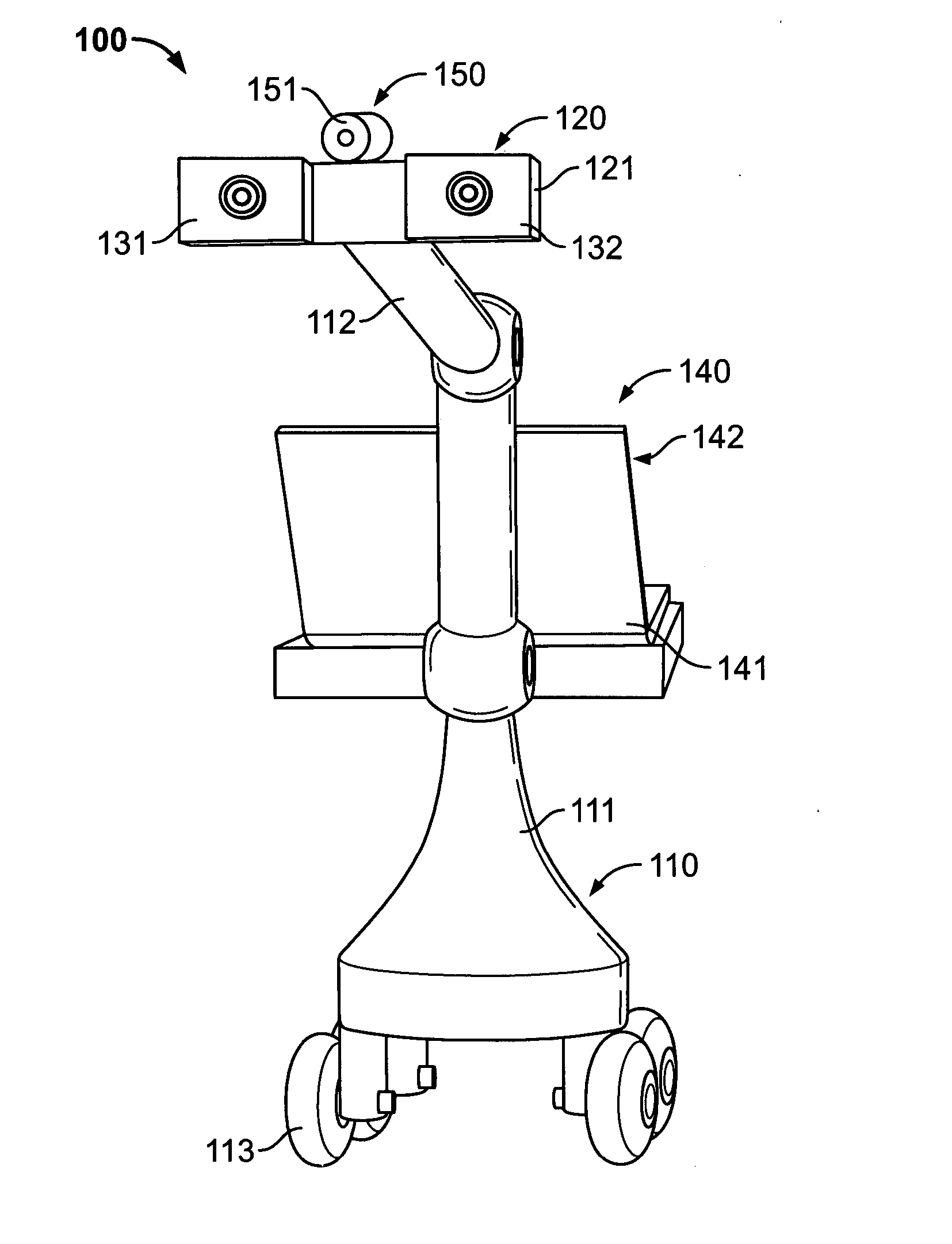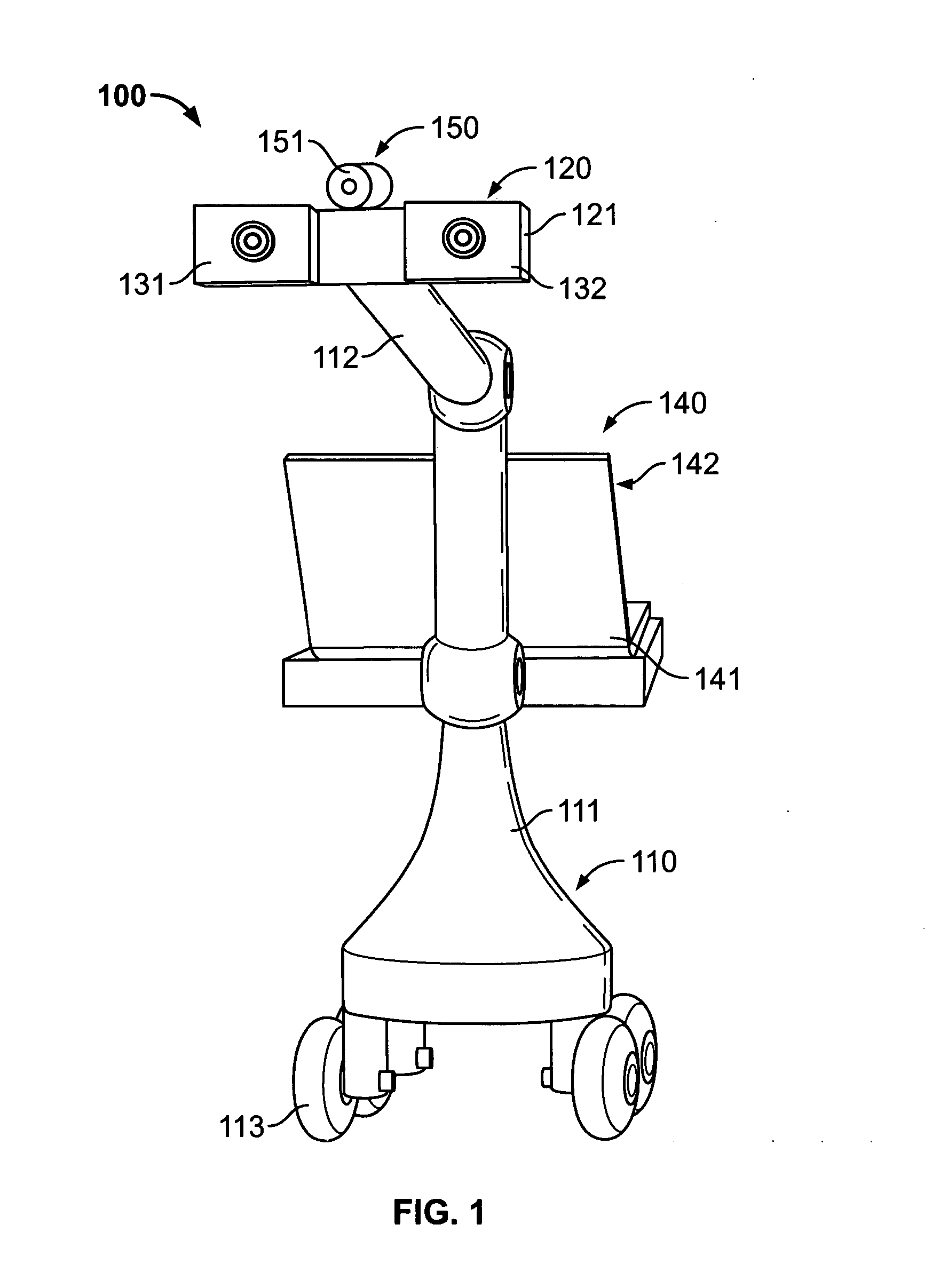System and methods for evaluating and monitoring wounds
a system and monitoring technology, applied in the field of wounds, can solve the problems of difficult defining the boundary of a wound, significant change in the appearance of a wound, and difficult measuremen
- Summary
- Abstract
- Description
- Claims
- Application Information
AI Technical Summary
Benefits of technology
Problems solved by technology
Method used
Image
Examples
Embodiment Construction
[0043] In accordance with one embodiment of the present invention, a system and methods for monitoring the healing of wounds is provided. Although described in detail with respect to one embodiment of the present invention, it is to be appreciated that the teachings of the present invention are amenable to other applications, such as, but not limited to any application for which data is sought using stereoscopic imaging, including the collection of data of large geographic areas using aerial images. The present invention is also useful to collect images over a period of time and facilitate the objective comparison of the same. The images that result from the use of the present invention can be taken and subjected to contemporaneous analyses in one place or sent to another location for generally contemporaneous or subsequent analyses and then returned to the site of origination. In this way, images of wounds may be taken on battle fields, field hospitals, regional health clinics, and...
PUM
 Login to View More
Login to View More Abstract
Description
Claims
Application Information
 Login to View More
Login to View More - R&D
- Intellectual Property
- Life Sciences
- Materials
- Tech Scout
- Unparalleled Data Quality
- Higher Quality Content
- 60% Fewer Hallucinations
Browse by: Latest US Patents, China's latest patents, Technical Efficacy Thesaurus, Application Domain, Technology Topic, Popular Technical Reports.
© 2025 PatSnap. All rights reserved.Legal|Privacy policy|Modern Slavery Act Transparency Statement|Sitemap|About US| Contact US: help@patsnap.com



